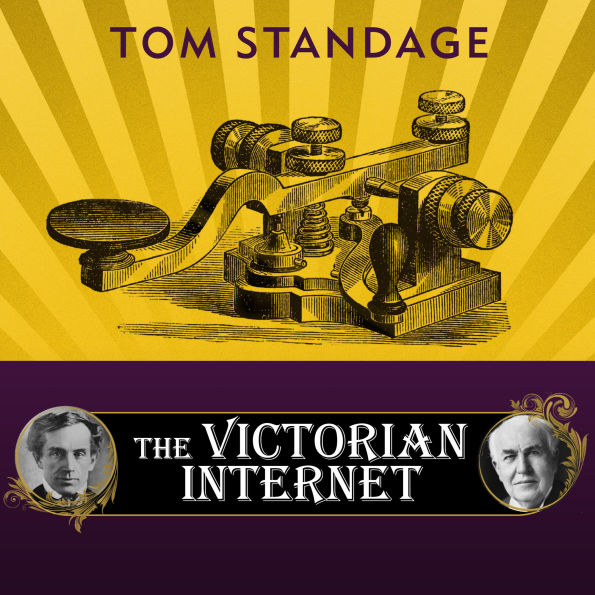John R. Alden
[Tom Standage's] writing is colorful, smooth and wonderfully engaging. The Victorian Internet is a delightful book. -- Smithsonian Magazine
USA Today
A fascinating walk through a pivotal period in history.
Forbes
Sparkling
Hari Kunzru
. . .[M]ight be something of a bummer to all those who still think that having an e-mail address guarantees their status as hipsters. . . .[But if] you've ever hankered for a perspective on media Net hype, this book is for you.
-- Wired
Kirkus Reviews
The telegraph, which now seems a curious relic, was once cutting-edge technology, every bit as hot, Standage reminds us, as today's Internet. Rapid delivery of messages to distant places was a wild dream for most of history; only on the eve of the French Revolution did a workable system come into existence. That first mechanical telegraph used visual signals relayed along a series of towers; but already scientists had experimented with signaling with electricity, which was thought to travel instantaneously. By the 1830s, Samuel Morse in the US and William Cooke in England had independently developed workable electric telegraphs. Curiously, neither had much initial luck finding backers. Morse's first demonstration of his device to Congress drew no support; even after a second demonstration won him funding, many congressmen believed they had seen a conjuring trick. Despite some dramatic successes, as when British police wired ahead of felons escaping by train and had them arrested in a distant city it was some time before the telegraph was more than a high-tech toy. But by the mid-1840s, both British and American telegraphy companies were showing profits, and by the end of that decade, growth was explosive. And by then, the elaborate culture of the telegraph system was taking shape. Telegraph operators and messenger boys became familiar parts of the social landscape. There was a growth industry in telegraph-based jokes, anecdotes, scams, and even superstitions. The charge per word transmitted made messages terse; the expense made most people use them only to report deaths in the family or other grave news. Technical improvements—notably in the laying of submarinecables—eventually led to a worldwide network.
Standage, most recently (and suitably) editor of the London Daily Telegraph's technology section, competently relates all this, and the eventual erosion of the telegraph's power by the telephone, which was at first seen merely as an improvement in the telegraph. A fascinating overview of a once world-shaking invention and its impact on society. Recommended to fans of scientific history.
From the Publisher
"Fans of Longitude will enjoy another story of the human side of dramatic technological developments, complete with personal rivalry, vicious competition, and agonizing failures." ---Therese Littleton, Amazon.com
From the Publisher - AUDIO COMMENTARY
"Fans of Longitude will enjoy another story of the human side of dramatic technological developments, complete with personal rivalry, vicious competition, and agonizing failures." —Therese Littleton, Amazon.com
MAY 2015 - AudioFile
Tom Standage first published his history of the telegraph about a year after the once-ubiquitous machine went out of service in 2006. Derek Perkins narrates this revised version with enthusiasm for the technology that shaped the 1800s as the parallels between the telegraph and the Internet are drawn. Standage packs in lots of factual information, blending it with anecdotes. Perhaps the best is the story of a telegraph wedding conducted in two cities to evade a father's objections. Perkins delivers these stories in a voice that has sufficient gravity but that also leaves room for drama and amusement. Even listeners who think they’re not interested in the topic could find this audiobook surprisingly fascinating. J.A.S. © AudioFile 2015, Portland, Maine



